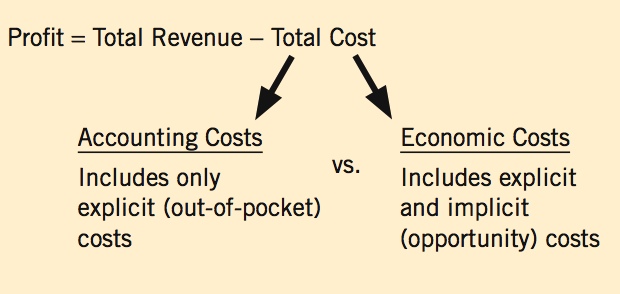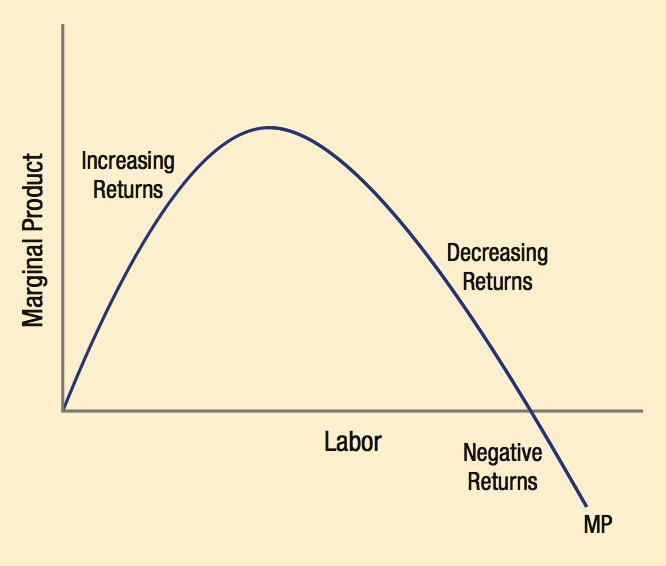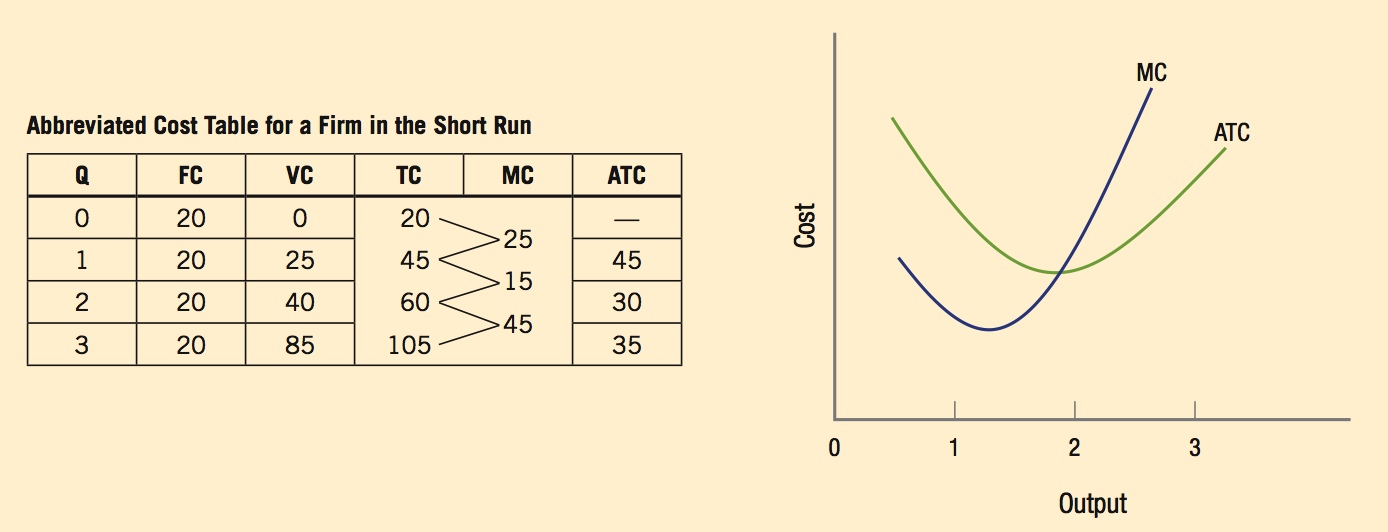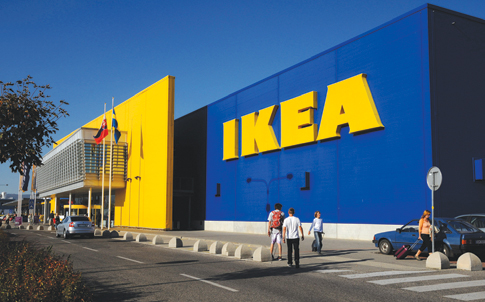Chapter summary
Chapter Summary
Section 1: Firms, Profits, and Economic Costs
Firms are economic institutions that transform inputs (factors of production) into outputs (products and services).

Types of Businesses
Sole proprietorship: unlimited liability, full control
Partnership: unlimited liability, shared control
Corporation: limited liability, ability to issue stock

Economic profit = total revenue − economic costs
Normal profit is an economic profit of $0.
Short run: period of time during which at least one factor of production is fixed.
Long run: a period long enough that firms can vary all factors, as well as leave and enter industries
Section 2: Production in the Short Run

Total product is the quantity of output produced using a certain amount of labor inputs.
Marginal product is the change in output associated with hiring one additional worker, or ΔQ/ΔL.
Increasing Versus Decreasing Returns to Labor
When increasing returns are present, each additional worker adds more to total output than previous workers.

Eventually, all production is subject to the law of diminishing returns, causing decreasing returns from adding more workers.
Having extra workers is very productive at first, but eventually everyone gets in each other’s way, leading to decreasing returns to labor.
Section 3: Costs of Production

Short-Run Costs
In the short run, firms have fixed costs (FC) that do not vary with output and variable costs (VC) that do vary.
Total cost (TC) = fixed cost + variable cost
Marginal cost (MC) = change in total cost from producing one more unit
Average fixed cost (AFC) = fixed cost / quantity
Average variable cost (AVC) = variable cost / quantity
Average total cost (ATC) = total cost / quantity
Abbreviated Cost Table for a Firm in the Short Run

Why Does MC Cross ATC at Its Minimum Point?
When the next unit costs less than the average (MC < ATC), ATC falls. When the next unit costs more than the average (MC > ATC), ATC rises. For example, suppose your current course grade is 85%. If your grade on your next exam is 90%, your marginal exam score is greater than your average score, therefore your average rises. However, if your next exam grade (marginal score) is 70%, your average falls.
Long-Run Average Total Cost

In the long run, all factors of production are variable, and firms can enter or leave the industry. The long-run average total cost (LRATC) curve is the lowest unit cost for any specific output level in the long run.
Economies of scale occur when the average cost of production falls as a firm grows and cost savings from specialization in labor and management occur.
Eventually, diseconomies of scale occur when a firm’s size becomes so large that efficient management becomes impossible.
Economies of scope are cost savings resulting from the ability of firms to produce many interdependent products.